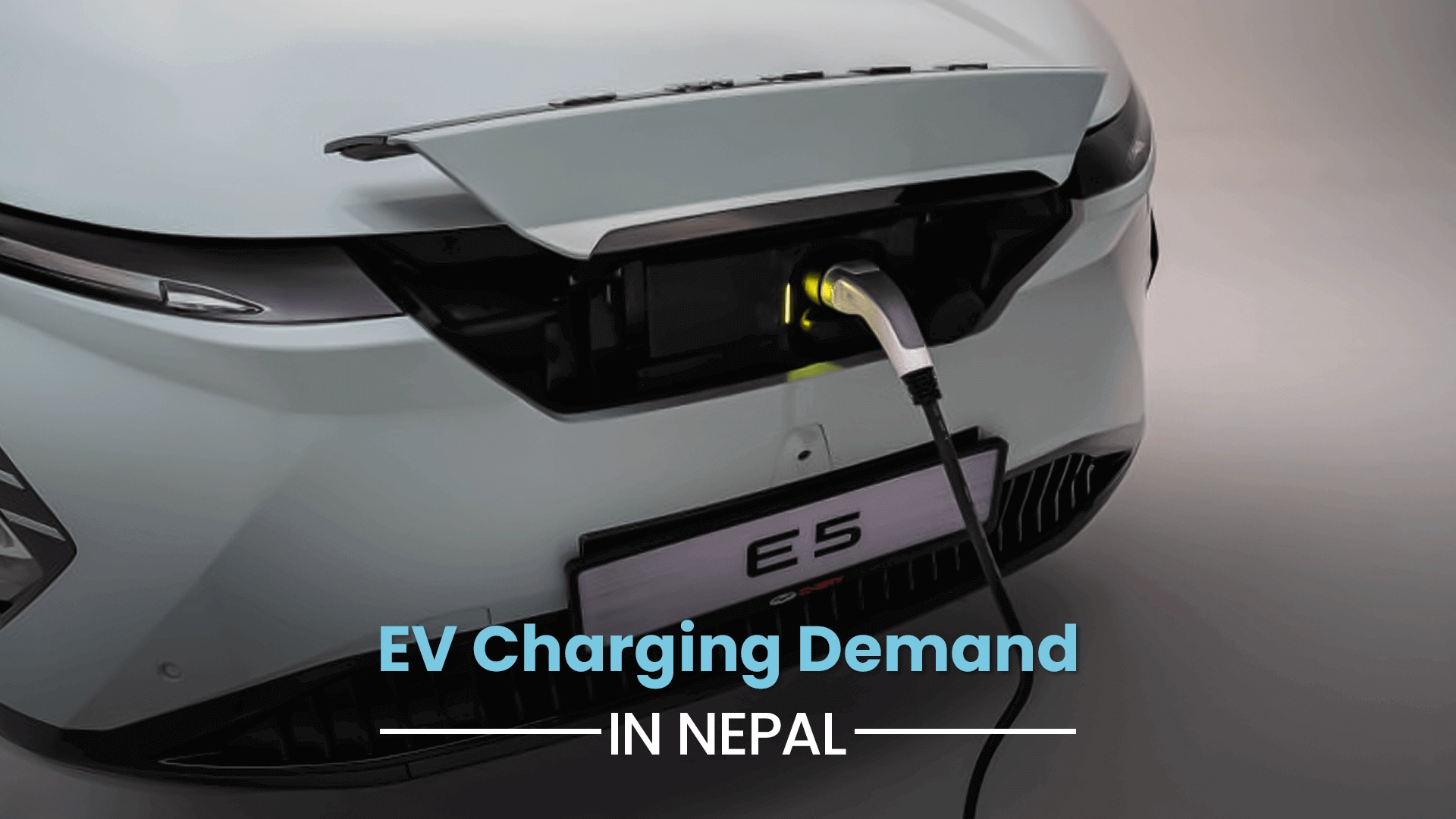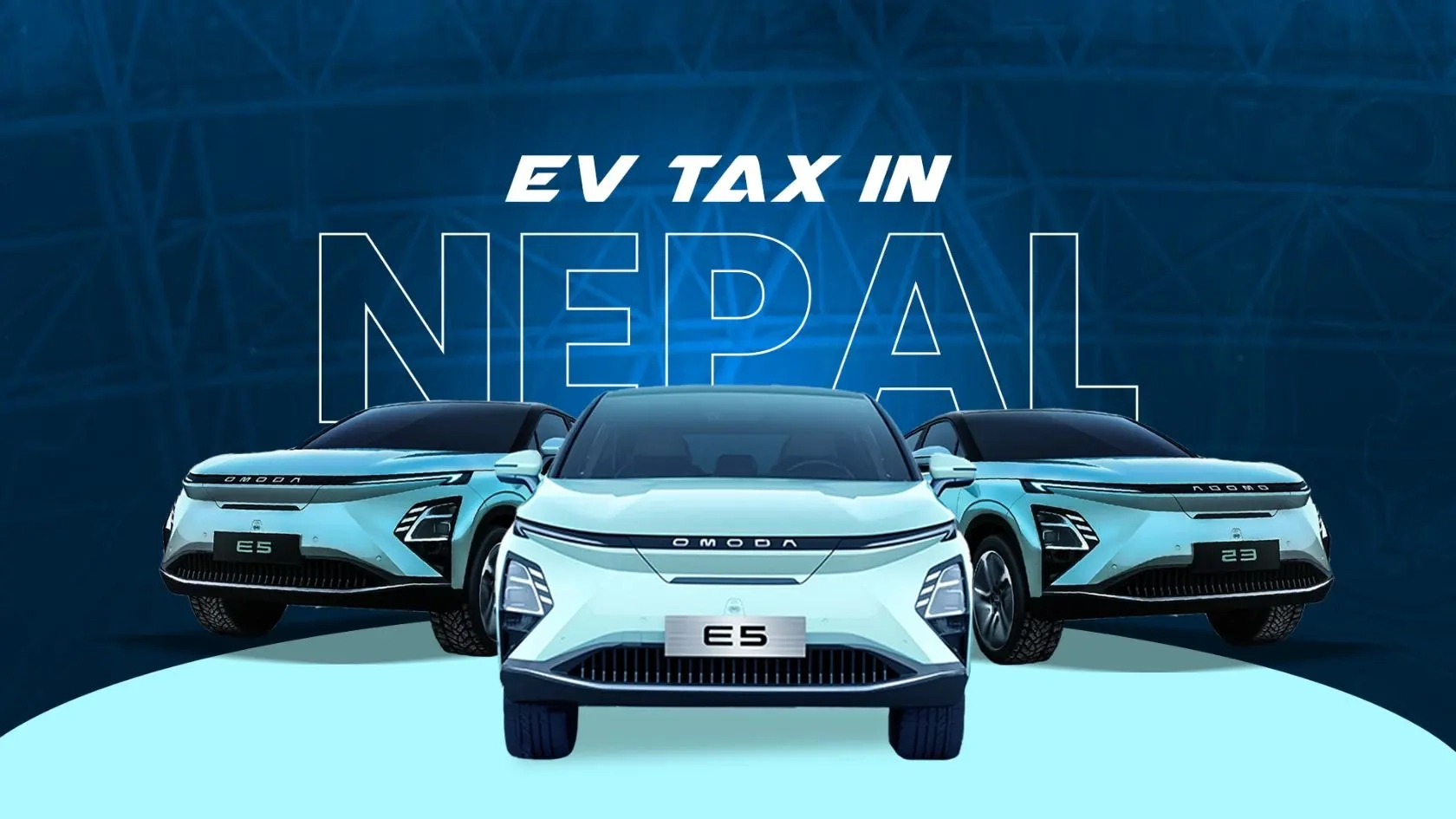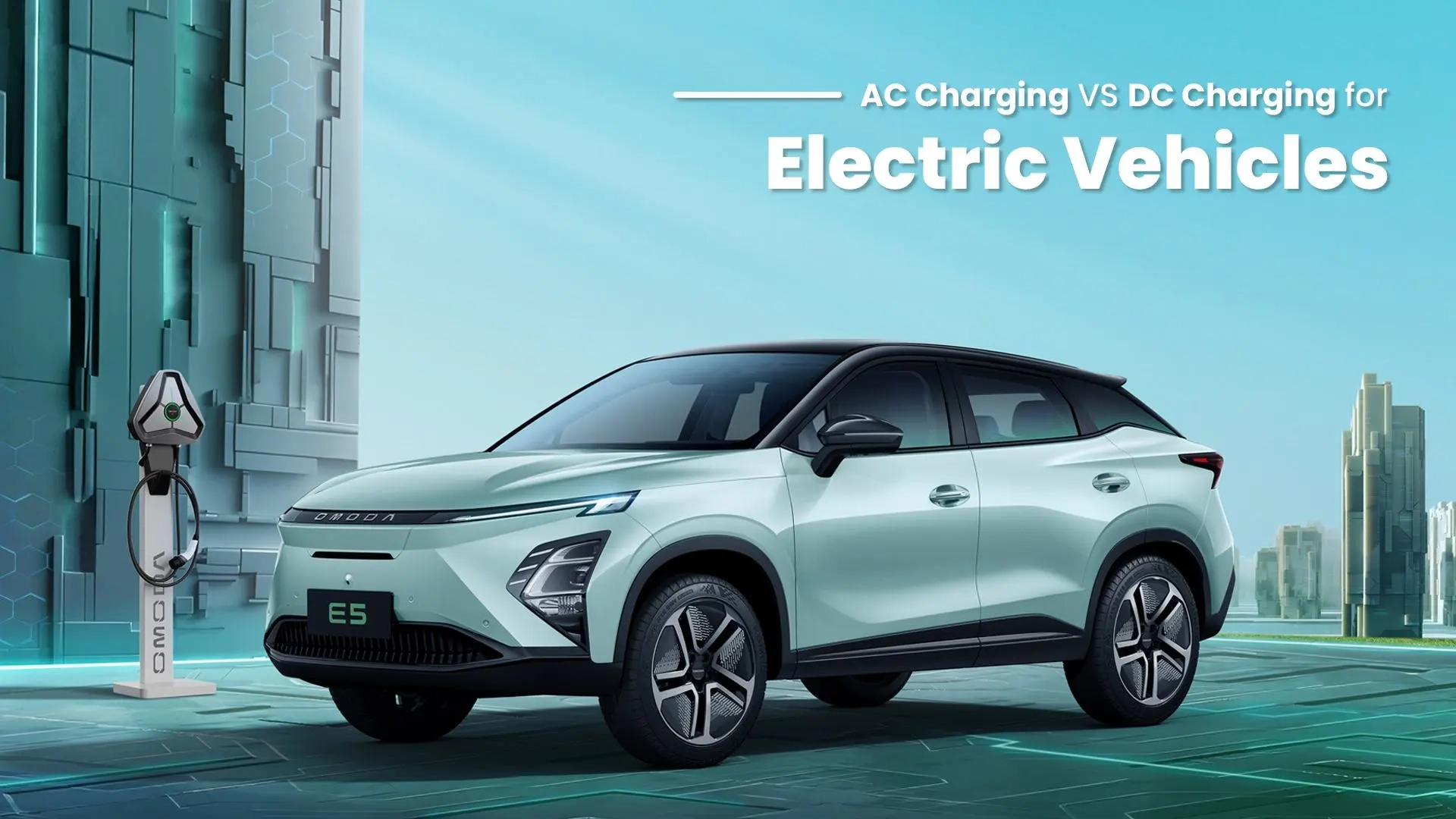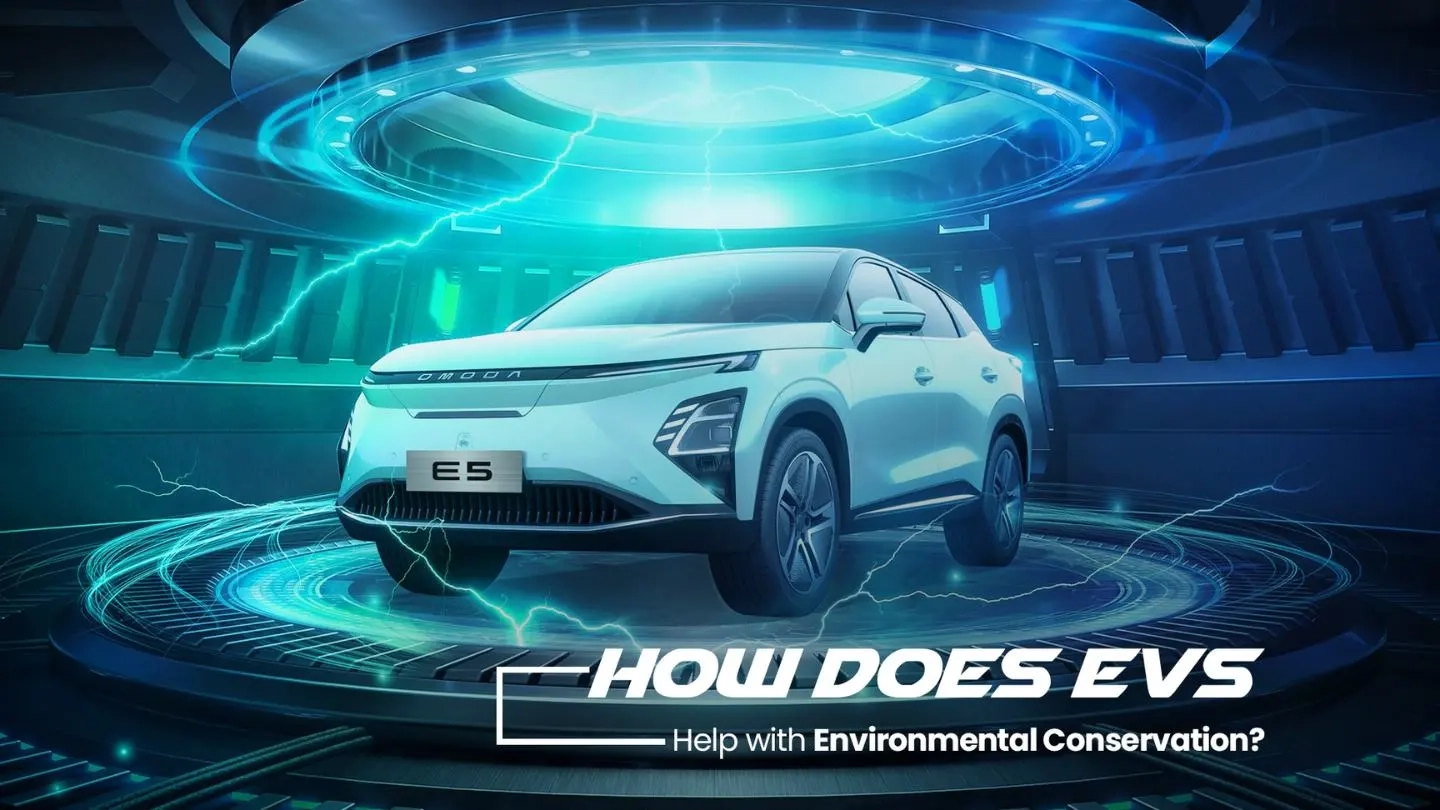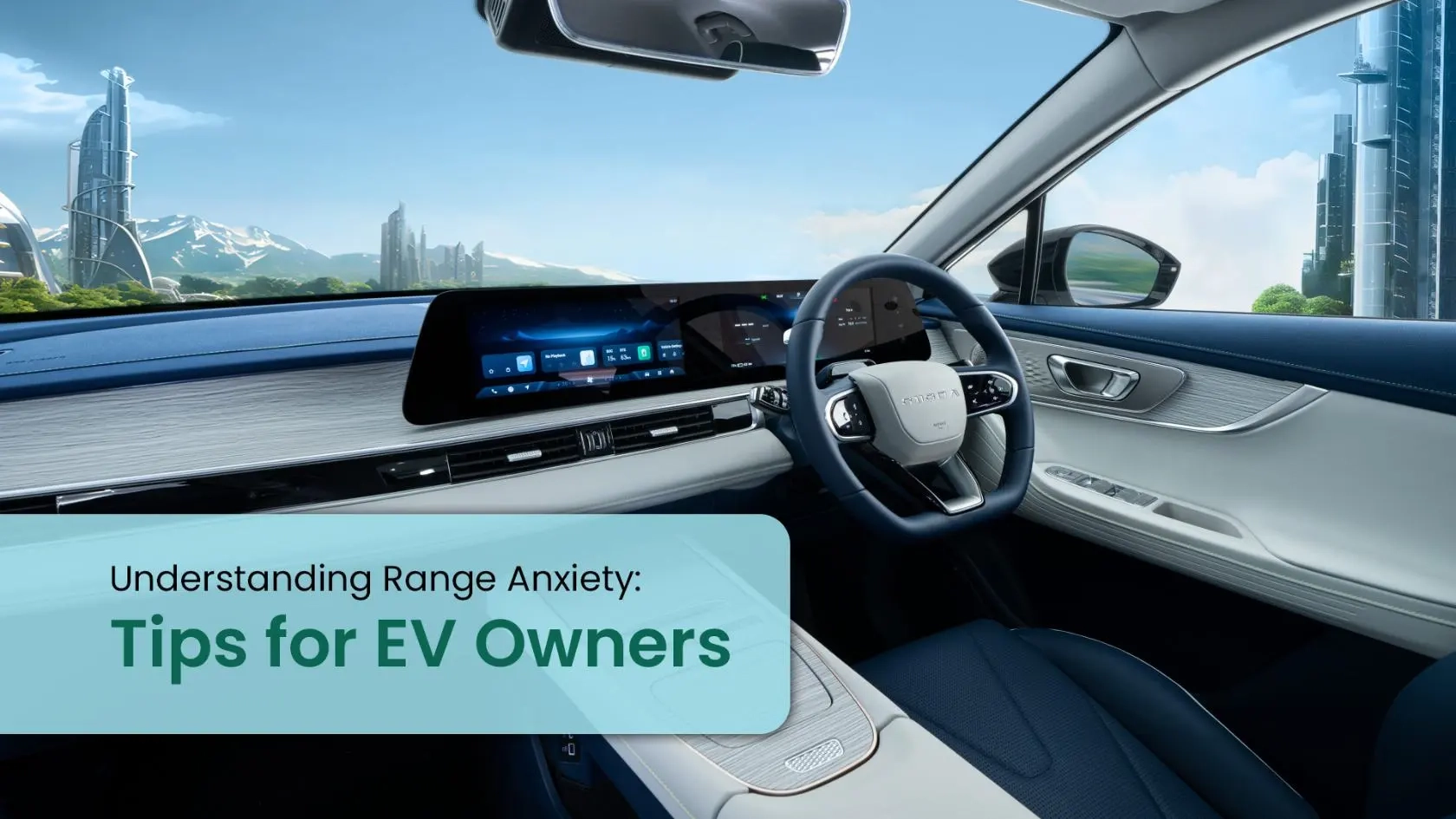Why Will EV Charging Stations Be in Demand in Nepal?
July 11, 2024
Why Will EV Charging Stations Be in Demand in Nepal?
July 11, 2024
As the world transitions towards sustainable energy solutions, electric vehicles (EVs) have emerged as a pivotal element in reducing carbon footprints and fostering environmental sustainability. Nepal's growing interest in electric vehicles (EVs) is a big step toward cleaner transportation. This change necessitates a corresponding increase in EV charging stations to support and sustain this eco-friendly movement.
The rise in electric vehicle (EV) adoption in Nepal has created an urgent need for a robust and widespread network of EV charging stations. Establishing such an infrastructure is critical to supporting the growing number of EVs on the road and ensuring their efficient and convenient use.
The global electric vehicle (EV) market has seen remarkable growth, driven by government policies, technological advancements, environmental concerns, and automaker investments. Countries worldwide are adopting EVs at an unprecedented rate, supported by subsidies, tax breaks, and improved battery technology. In Nepal, the EV market, though still emerging, is experiencing a significant rise in adoption. Government initiatives, such as reduced customs duties and VAT exemptions, coupled with the increasing cost of fuel and heightened environmental awareness, are propelling this growth.
Recent statistics indicate a notable increase in EV registrations, particularly for electric two-wheelers and cars. The development of EV charging infrastructure and efforts to electrify public transportation are further encouraging this trend. Projections suggest continued growth in Nepal's EV market, driven by enhanced infrastructure, increased awareness, and ongoing technological improvements, signaling a promising future for electric mobility in the country.
AC vs DC Charging for EVs: Learn the Difference
Installing EV charging stations in Nepal can significantly encourage more people to buy electric vehicles. One of the primary concerns for potential EV buyers is the availability of convenient charging options. To address this concern, the presence of well-distributed charging stations across the country can alleviate range anxiety and make EV ownership more practical and appealing. This infrastructure development is crucial in fostering a supportive environment for EV adoption, ultimately leading to an increase in the number of electric vehicles on Nepalese roads.
Businesses and property owners in Nepal stand to gain financially from providing EV charging services. By installing charging stations, they can attract more customers, thereby increasing foot traffic and potentially boosting sales. Offering EV charging can also open up new revenue streams, as drivers pay for the convenience of charging their vehicles. This creates a mutually beneficial situation where both the businesses and the EV owners benefit.
While the initial investment in setting up EV charging stations may be significant, the long-term benefits are substantial. Lower operational costs compared to traditional fuel stations, as well as the growing number of EV users, ensure a consistent return on investment. As EV adoption continues to rise in Nepal, businesses and property owners who invest early in charging infrastructure can expect sustained financial returns and cost savings over time.
EV charging stations may increase the value of properties in Nepal. These properties become more attractive to tenants, buyers, and investors who prioritize sustainability and modern amenities. The presence of charging stations can make a property stand out in the market, enhancing its overall value and appeal.
Offering EV charging can significantly enhance a business's reputation in Nepal. Investing in sustainable practices positions businesses as environmentally conscious and forward-thinking, thereby attracting eco-conscious customers. This not only improves brand loyalty but also provides a competitive edge in the market. By promoting sustainability, businesses can align themselves with the growing movement towards environmental responsibility, strengthening their brand image and customer base.
Early adoption and establishment of EV charging infrastructure in Nepal are crucial for staying ahead of the demand curve. By investing in charging stations before demand peaks, businesses and property owners can secure a competitive edge and avoid potential future challenges, such as increased prices and heightened competition for EV charging stations. Successfully implementing and managing EV charging infrastructure involves strategic planning, including selecting optimal locations, leveraging government incentives, and integrating the latest technologies for efficient operation. Proactive measures now can ensure a robust, reliable network that supports the growing number of EVs and positions stakeholders as leaders in the sustainable transportation movement.
EV Charging Stations for Omoda Jaecoo EVs
The demand for EV charging stations in Nepal is set to rise as more people recognize the benefits of electric vehicles. By investing in EV charging infrastructure, businesses and property owners can not only contribute to a sustainable future but also reap substantial economic benefits. Early adoption and strategic implementation of EV charging stations will position Nepal at the forefront of the green transportation revolution, fostering a cleaner, more sustainable environment for all.
Encouraging businesses and property owners to invest in EV charging stations is not just about keeping up with a trend; it's about pioneering a movement that promises a greener, more prosperous future for Nepal.
EV Tire Care Nepal: Prevent Quick Wear & Ensure Longevity
June 18, 2024
EV Tire Care Nepal: Prevent Quick Wear & Ensure Longevity
June 18, 2024
Electric vehicles (EVs) are revolutionizing the automotive industry, offering an eco-friendly alternative to traditional fuel-powered cars. Tire maintenance is a critical component of maintaining an EV's performance and efficiency. But how different are EV car tires from those used in conventional vehicles? Let's delve into the specifics of EV tire care, understand why they might wear faster, and learn how to extend their lifespan, especially on the varied roads of Nepal.
Electric vehicles specifically design EV tires to meet their unique demands. Unlike conventional car tires, EV tires must support heavier batteries and provide high torque instantly. These tires often feature a special rubber compound that reduces rolling resistance and noise, improving energy efficiency and enhancing driving comfort. This unique design helps maximize the range and performance of EVs, making them distinct from regular tires.
Yes, EV car tires tend to wear out faster than those on fuel-powered vehicles. The primary reasons include the heavier weight of EVs due to their batteries and the high torque that electric motors deliver instantaneously. This combination puts extra stress on the tires, leading to quicker wear and tear.
Additionally, the regenerative braking system in EVs can cause uneven tire wear, particularly on the front tires, as they handle most of the braking force.
The lifespan of EV tires can vary, typically ranging from 48,000 to 64,000 kilometers under optimal conditions. However, factors such as driving habits, road conditions, and tire maintenance significantly impact their longevity. While high torque and heavy batteries accelerate tire wear, EV tires' lightweight design can counteract some of it.
The durability of EV tires can undergo further testing in Nepal, where road conditions range from smooth highways to rugged mountain paths. Drivers need to be especially careful in such diverse environments to ensure maximum tire life.
Regularly checking your EV car tires for wear can prevent unexpected issues and ensure your safety. Here are some simple methods to do so:
To maximize the lifespan of your EV tires, consider the following tips:
Taking care of your EV tires is crucial for maintaining the performance and safety of your electric vehicle. Understanding the unique demands of EV car tires, regularly checking for wear, and following best practices for the maintenance of EV cars can help you ensure your tires last longer, even on Nepal's diverse roads. With proper care, you can enjoy a smoother, safer, and more efficient driving experience in your EV.
EV Tax in Nepal: Its Trends and Impact
June 16, 2024
EV Tax in Nepal: Its Trends and Impact
June 16, 2024
Buying a new EV in Nepal means understanding your EV taxes. Continue with the blog to learn about the latest EV tax in Nepal, the changes in the recent 4 years, and its effects on full EV adoption.
Taxes are levied on the items when they are bought and sold. They are the major source of revenue for the country. Since most of the vehicles on the roads in Nepal are imports from other countries, the government of Nepal (GoN) applies several taxes, such as customs duty, excise duty, and value-added tax (VAT). Every electric vehicle is subjected to these EV taxes in Nepal. Although the EV tax in Nepal had a comparative rise in the last few years, the EV tax for fiscal year 2082/2083 remains unchanged compared to the last fiscal year of 2081/2082.
Electric vehicles (EVs) face various taxes implemented to support the country, develop infrastructure, and promote certain goals. The following are the EV taxes in Nepal:
Value-added tax, or simply VAT, is a consumption-based tax. VATs are added to each stage of the production or distribution of items. These taxes apply to EVs and cars, along with all other goods and services, whether imported or locally produced. Some goods are exempt from VAT, while for the rest, including EV tax, Nepal has a single rate of 13%.
EV owners must pay a one-time registration fee when registering their EVs with the Department of Transport Management. The cost of registration depends on the capacity and type of the EV.
GoN imposes customs duty on every good imported into the country. It is designed to protect domestic industries or reduce the import of those items. Custom duty on EVs also depends on the type and capacity of the EV. In Nepal's context the customs duty on EVs has seen a rise in the last 4 years for all types and capacities of EVs.
Excise duties are the form of taxes levied on specific goods. Only a handful of goods are subject to excise duty as a tax, and the EV tax in Nepal is one of them. Sellers wrap excise duty into the price of the EV, so the end consumer or EV owner might not even know about it.
Unlike the above taxes, which are charged only once during the purchase, the road development fund fee is incurred annually. The tax goes by many names: road development fund, road tax, vehicle tax, car tax, or motorcycle tax. The Government of Nepal collects this tax to develop the road infrastructure and maintain & improve current roads in Nepal.
Many changes have been made regarding the import and purchase of EVs in Nepal. The decisions of the Government of Nepal and the policies follow the commitment to zero net carbon emissions and COVID-19.
The following table reflects the changes in custom duty and excise duty for EVs in Nepal in the last 4 years, from fiscal year 2079 to 2082 B.S.
| 2079/2080 | 2080/2081 | 2081/2082 | 2082/2083 | |||||
|---|---|---|---|---|---|---|---|---|
| EV Capacity | Custom Duty | Excise Duty | Custom Duty | Excise Duty | Custom Duty | Excise Duty | Custom Duty | Excise Duty |
| 50 KW | 10% | 0% | 10% | 0% | 15% | 5% | 15% | 5% |
| 50-100 KW | 10% | 0% | 15% | 10% | 20% | 15% | 20% | 15% |
| 101-200 KW | 30% | 30% | 20% | 20% | 30% | 20% | 30% | 20% |
| 201-300 KW | 45% | 45% | 40% | 45% | 60% | 35% | 60% | 35% |
| 300KW above | 60% | 60% | 60% | 60% | 80% | 50% | 80% | 50% |
The tax structure for EVs in Nepal remains unchanged for the fiscal year 2082/2083. The customs duty and excise duty for all motor capacities in Nepal remain the same as the previous fiscal year. The tax structure of EVs for 2082/2083 is as follows: The cars with motor capacity up to 50 KW have 15% customs and 0% excise duty. From 51 KW to 100 KW motor capacity, the customs duty is 20% and the excise duty is 10%. For vehicles with a motor capacity of 101 to 200 KW, the customs duty is 30% and the excise duty is 30%. 201-300 KW motor capacity has a customs duty of 60% and an excise duty of 45%. The electric cars with motor capacity above 300 KW have a custom duty of 80% and an excise duty of 50%.
Note: The Road Development Fund (RDF) and 13% VAT remain the same.
Recent rises in electric vehicles have caused an uproar among many people. Some commenters believe such sudden tax increments will reduce EV sales and hinder the adoption of EVs in Nepal. Others, however, see the positive side of it. The optimistic crowd believes the revenue generated from the tax will be used to construct new charging stations and make long travel in EVs possible, further promoting the transition to electric.
Nepal has actively promoted electric vehicles in the last few years. From 2022 to date, GoN, in partnership with various companies, has constructed over 50 EV stations, totaling almost 270 EV stations across Nepal.
Similar initiatives can be seen in government policies regarding taxes on electric vehicles. EV owners enjoy various tax benefits compared to ICE (internal combustion engine) vehicles.
Similarly to gasoline-fueled vehicles, many EV taxes in Nepal are levied on electric cars and bikes. Every EV tax fulfills some specific purpose. Customs duties help to control the excessive import of automobiles, while road taxes support road infrastructure development. Not all EV owners pay the same amount of EV tax, though. The tax on EVs in Nepal depends on the type and capacity of the EV. Two-wheelers and less powerful EVs are subject to less tax than four-wheelers and more powerful EVs.
All said, EV owners have various tax benefits from government policies. Even with the rise in EV taxes, EV vehicles still have lower tax rates compared to ICE vehicles, giving drivers enough incentive to switch to electric.
AC vs. DC Charging: What's the Difference for Electric Vehicles?
June 02, 2024
AC vs. DC Charging: What's the Difference for Electric Vehicles?
June 02, 2024
Electric vehicles (EVs) are the way towards a cleaner and more sustainable future in transportation. Central to this technology are the types of electrical power used to charge these vehicles: Alternating Current (AC) and Direct Current (DC).
Understanding the distinctions between AC and DC power, their applications in EVs, and their respective benefits and drawbacks can help you make more informed decisions about EV charging. This blog post will cover all the essential details you need to know.
Alternating Current (AC) power alternates its direction periodically, which means the flow of electricity switches back and forth. This type of power is more efficient for transmitting electricity over long distances, which is why it is the standard for the electrical grid and household outlets. When you charge an EV using AC power, the onboard charger converts the AC power to DC power to charge the battery.
AC power is popular because it can be easily transformed into different voltages, making it more versatile for distribution and use in a variety of applications, from household appliances to industrial machinery.
Direct Current (DC) power is characterized by a unidirectional flow of electric charge. Unlike AC, DC power flows consistently in one direction. This is the type of power that batteries store and deliver. In an EV, the battery is a DC power source, supplying the electric motor with the energy required to operate the vehicle.
DC power is efficient for devices requiring a constant voltage, such as electronic gadgets, LED lighting, and, most importantly, EVs. An EV's battery stores energy in DC form, which requires conversion to DC when plugged into a charger.
While DC power is essential for the operation of EVs, AC power plays a crucial role in the charging infrastructure. The question of which is superior depends on the context. AC power is excellent for grid distribution and long-distance transmission due to its efficiency and existing infrastructure. DC power, on the other hand, is crucial for the efficient operation of electronic devices and fast charging EV batteries.
Understanding both AC and DC power is essential for maximizing the efficiency and effectiveness of EV charging. Each has its role, and knowing how they complement each other can help you make better choices regarding EV charging solutions.
Explore the scenario of EV Charging Stations in Nepal
Selecting the right charger depends on your driving habits, installation budget, and future needs. Here are some concise tips to guide your decision:
Understanding the differences between AC and DC power is crucial for optimizing the efficiency and convenience of charging your electric vehicle. Each type of power has its advantages and disadvantages, and the best choice depends on your specific needs and circumstances.
AC power is ideal for everyday charging due to its cost-effectiveness and widespread availability, while DC power excels in fast charging and long-distance travel scenarios.
By being informed about both AC and DC power, you can make the best decision for your EV lifestyle.
How does EV help with Environmental Conservation?
May 17, 2024
How does EV help with Environmental Conservation?
May 17, 2024
Electric vehicles (EVs) are rapidly becoming a significant player in the global transportation sector, particularly in regions striving for environmental sustainability. Nepal, with its extensive road network and heavy reliance on petrol and diesel vehicles, faces numerous environmental challenges. The dominance of conventional vehicles has led to increased air pollution and a substantial carbon footprint. Emissions from petrol and diesel engines release harmful pollutants such as carbon monoxide (CO), nitrogen oxides (NOx), and particulate matter (PM), which degrade air quality and pose severe health risks.
Moreover, the reliance on fossil fuels contributes to greenhouse gas emissions, exacerbating global warming and climate change. In this blog, we will delve into how electric vehicles can significantly contribute to these environmental issues.
The need for eco-friendly transportation options is increasingly clear, given the escalating air pollution in metropolitan areas. Worldwide, there's a growing emphasis on adopting sustainable methods to decrease our impact on the environment. In this context, electric vehicles emerge as a promising, cleaner alternative. Electricity from renewable sources like hydro, wind, and solar power powers EVs, making them a crucial element in the shift towards sustainable transportation.
One of the most significant environmental benefits of electric vehicles is their ability to drastically reduce CO2 emissions. Unlike conventional vehicles, EVs produce minimal-to-zero CO2 emissions while operating. This reduction is crucial to combating climate change and improving air quality. The lifecycle emissions of EVs, from manufacturing to disposal, are also generally lower than those of traditional vehicles, further amplifying their environmental advantages.
Electric vehicles eliminate the need for fossil fuels, such as petrol and diesel, which are finite resources and major contributors to environmental degradation. Without fuel tanks or tailpipes, EVs avoid the emissions associated with extracting, refining, and burning fossil fuels. This shift not only helps conserve natural resources but also reduces geopolitical tensions related to fossil fuel dependence.
Electric vehicles are inherently more energy-efficient than their gasoline-powered counterparts. The energy conversion efficiency of EVs is significantly higher; electric motors convert over 85% of the electrical energy into mechanical energy, while internal combustion engines typically convert only about 20–30% of the energy from fuel into useful power. This superior efficiency means that EVs can travel further on the same amount of energy, leading to lower overall energy consumption.
The production of electric vehicles involves meticulous manufacturing processes designed to minimize environmental impact. Advances in battery technology and sustainable material sourcing are lowering the carbon footprint associated with EV production. Additionally, many manufacturers are adopting recycling programs for batteries and other components, ensuring that the lifecycle of an EV is as eco-friendly as possible.
Traditional vehicles are significant contributors to noise pollution, particularly in urban areas. The internal combustion engines and exhaust systems of petrol and diesel vehicles generate substantial noise, contributing to noise pollution and associated health issues. In contrast, electric vehicles operate silently, using electric motors that produce minimal noise. This reduction in noise pollution enhances the quality of life in urban settings, making cities quieter and more livable.
The environmental benefits of electric vehicles are manifold, ranging from reduced CO2 emissions and decreased dependency on fossil fuels to improved energy efficiency and lower noise pollution. As Nepal looks towards a sustainable future, the adoption of EVs presents a viable path forward. Embracing electric vehicles could significantly reduce the environmental footprint of Nepal's transportation sector, paving the way for cleaner air and a healthier population.
The future of EVs in Nepal’s automobile industry appears promising, with the potential to become the primary mode of transportation, driving the country towards a more sustainable and environmentally friendly future.
Understanding Range Anxiety: Tips for Electric Vehicle Owners
April 24, 2024
Understanding Range Anxiety: Tips for Electric Vehicle Owners
April 24, 2024
As electric vehicles (EVs) gain popularity in Nepal, drivers grapple with a common concern: range anxiety. Imagine driving through Nepal's beautiful scenery and realizing that the nearest charging spot is a distance away and your battery is dying. The prospect of becoming lost on a remote mountain road detracts from the thrill of the trip. This shows how important it is to carefully plan your route and have strong charging stations.
Let’s delve into the essence of range anxiety, understand its implications for EV owners in Nepal, and explore effective strategies to extend EV range and alleviate charging concerns.
Range anxiety is the fear electric vehicle (EV) owners experience when they anticipate their vehicle's battery running out of charge before reaching a charging station. This concern is particularly relevant in Nepal due to its diverse terrain, ranging from rugged mountains to urban areas. The risk of being stranded without power increases when navigating through remote regions with limited charging infrastructure.
Thus, understanding one's vehicle range and planning journeys carefully are essential to reducing this anxiety and ensuring a smooth EV driving experience in Nepal.
Range anxiety among electric vehicle (EV) owners frequently stems from concerns about limited range and inadequate charging infrastructure. Here's a list of the key causes:
Range anxiety can have several significant impacts on electric vehicle (EV) owners:
To overcome range anxiety and enhance the electric vehicle (EV) ownership experience, consider the following tips:
By implementing these tips and strategies, EV owners can overcome range anxiety and enjoy the benefits of electric mobility with confidence and peace of mind.
Technological advancements are continuously addressing range anxiety for electric vehicle (EV) owners. Here are several key technological solutions:
Range anxiety remains a significant concern for electric vehicle (EV) owners, particularly in regions with diverse terrain like Nepal. However, we can effectively manage range anxiety by implementing the strategies outlined in this blog, which include meticulous planning, understanding vehicle capabilities, and leveraging technological advancements.
Drivers can confidently navigate, aware of the expanding charging infrastructure, improving battery technology, and optimizing driving habits to maximize range. With proper planning and awareness, range anxiety need not be a barrier to enjoying the benefits of electric mobility.
By embracing the transition to electric vehicles and adopting sustainable transportation practices, we can pave the way towards a greener, more sustainable future for transportation in Nepal and beyond.

